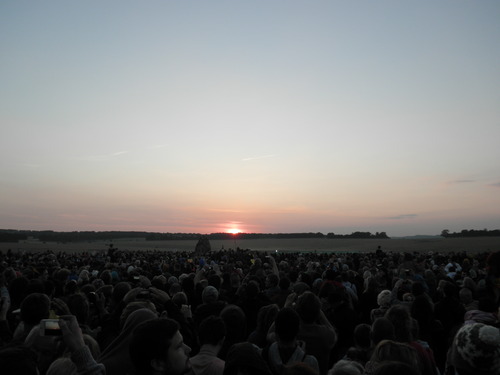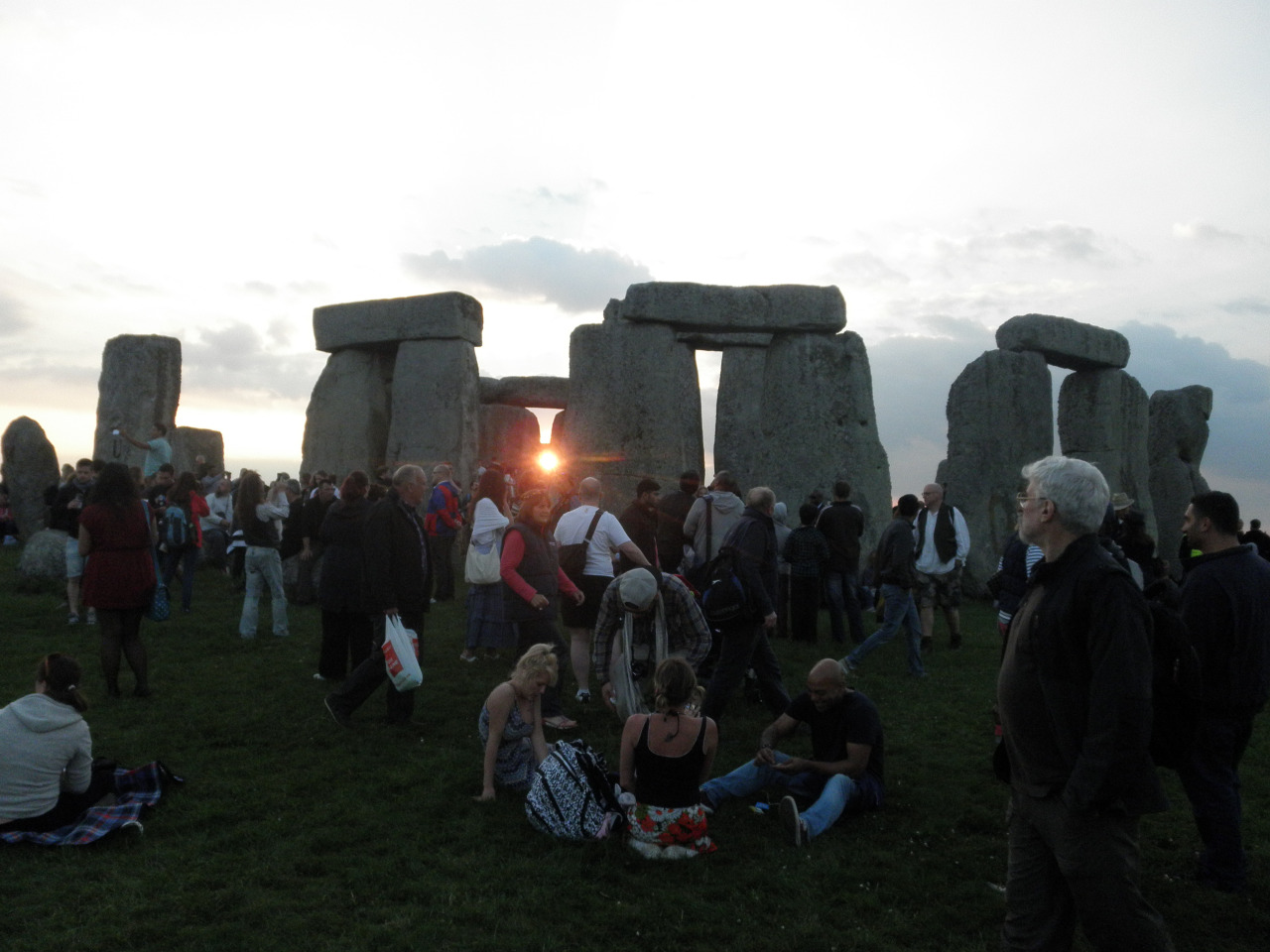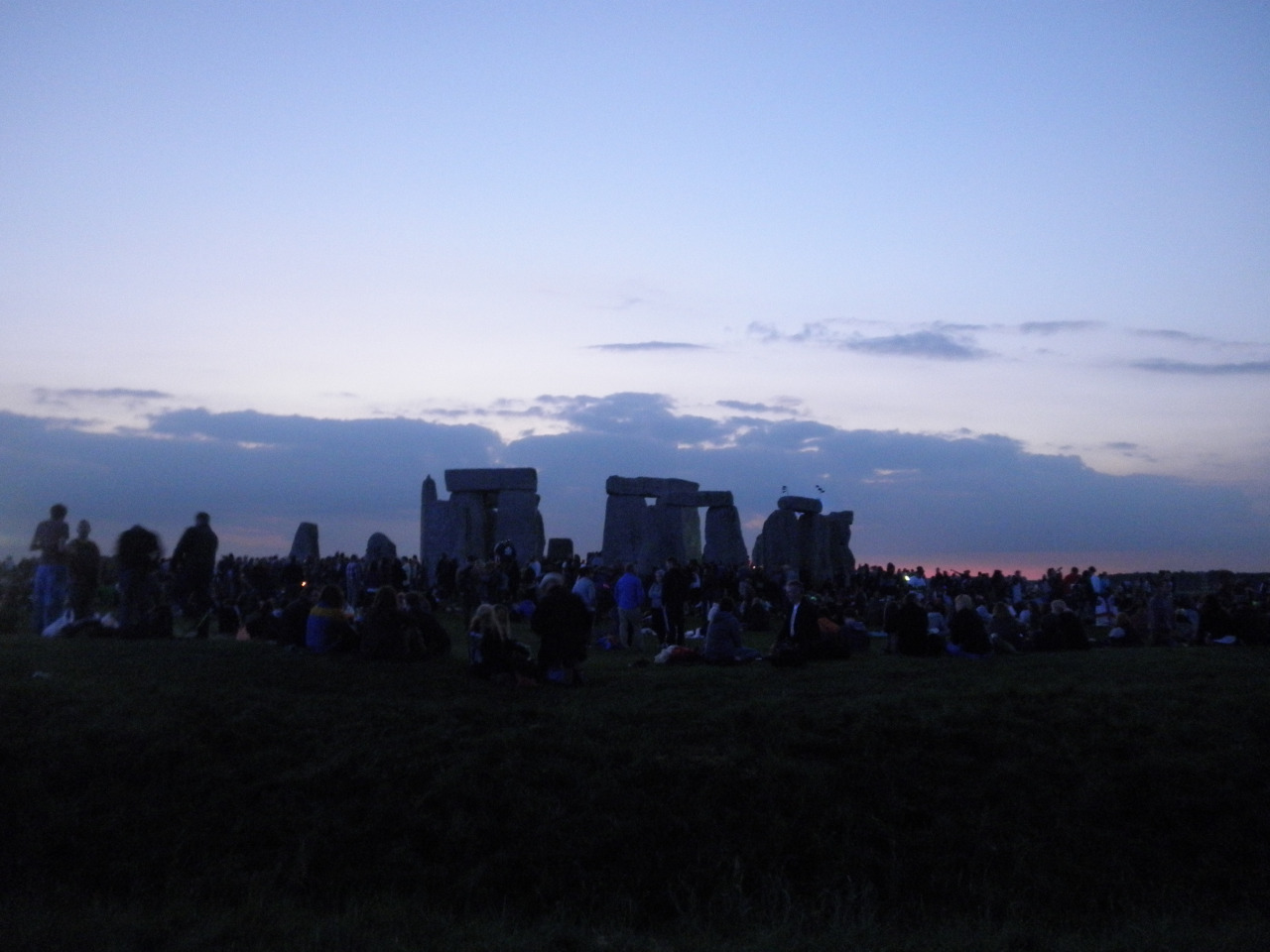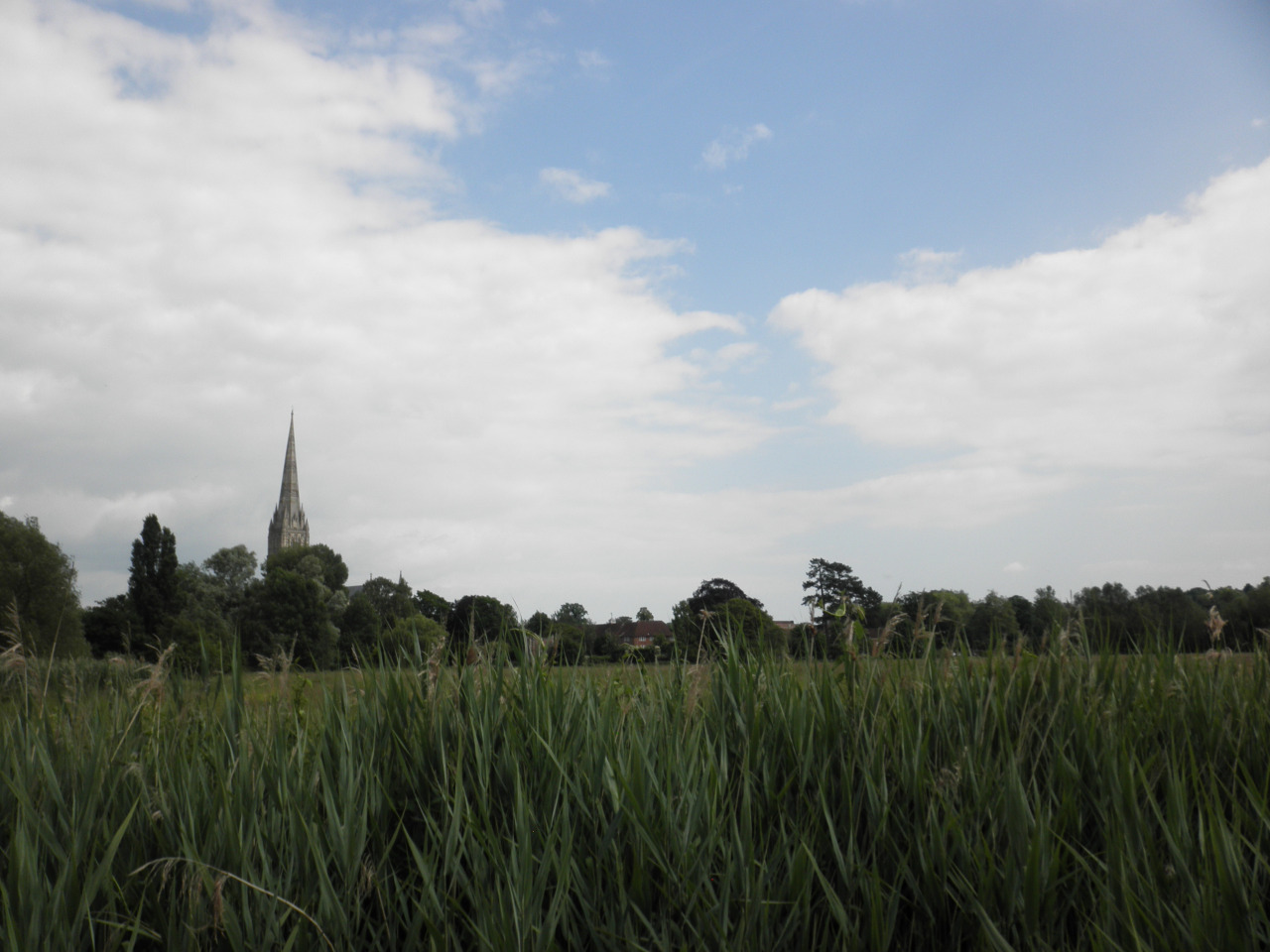Engineering Eurotrip
Ye Olde Trip to Jerusalem
The walk to Stonehenge
What’s the meaning of Stonehenge?!
A prayer from the Druids
Sunset through Sunrise: Summer Solstice at Stonehenge
Getting to Stonehenge
Salisbury, England
So…I went to Stonehenge. On the Summer Solstice. (meep)
June 20th – 21st, 2014
Stonehenge immediately solicits opinions from people: a pile of rock, the epicenter of ancient spirituality, a tourist trap, or a mystery (who the fuck builds a Stonehenge?). On most days of the year, I would have to agree with the tourist trap sentiment. It’s expensive, impossible to reach by public transport, and unable to be touched. BUT, on this, the solstice, entry was free, 10-pound round-trip buses took us easily from/back to the Salisbury train station, and we could sleep, eat, pray, dance, drum circle (yes, that is now a verb), face-paint, and laugh amongst the stones.
On the way from London to Salisbury I was so excited to finally be on a British train. I felt like I should channel my inner JK Rowling so I pretended to write for a while on the table Nadia and I had grabbed all to ourselves. Salisbury itself turned out to be more interesting than we had thought. There was a scary moment on the way there when the train stopped completely and we were surrounded by expansive pastures on one side and dilapidated back yards on the other. Suddenly the definition of “small town” and the “middle of nowhere” took on scary new meanings – luckily the train did lurch forward and brought us to a proper train station.
Nadia and I were immediately taken by the narrow cobblestone streets that abutted modern roads and winding paths that led over bridges and through parks into the heart of Salisbury. We stopped in at the Old Ale House for what I described as “our last meal” before Stonehenge. The place was empty save for a handful of locals getting a pint and a very large St Bernard; light streamed in from the windows we sat next to, but the rest of the pub was as dark as the wood it was made of. After lunch we trekked to the Cathedral of Salisbury. We wandered around an outer atrium with signs boasting of an original magna carta hiding behind now locked doors. In the sanctuary we sat in silence as the choir’s voices filled the cathedral for the end of the evening service. The church’s architecture forced your eyes upward in awe. During our walk back to the train station, I tried to tell Nadia whatever I could remember on Martin Luther, Henry VIII’s divorce(s), and the creation of the Anglican church.

At 6:30 a long cue had already formed for the solstice bus to Stonehenge. We bought our ticket and tried to guess whether we could make it onto the first bright-red double-decker bus. Happily, Nadia ran into Lydia, a girl she had befriended at a hostel in London earlier in the week. The twenty minute bus ride turned into an hour with traffic as cars and more buses piled onto the two lane road; the wait gave Nadia and Lydia time to catch up and me time to get to know the Dutch-getting-a-masters-in-anthropology-girl sitting beside me.
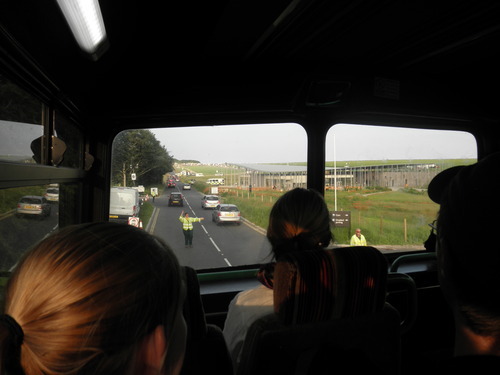
We walked through a mile of fields from the bus into the festival. Beat-up cars, Volkswagen buses, and trucks with people piled into the bed all parked in droves on the grass like at a county fair. We passed drug check points, bag checks, food trucks, concert platforms, and rows of port-a-poties before we finally had the henge in our sights. The sun set behind us over fields as far as the eye could see. On our way there, guards stood by a generator hooked up to one of the many spotlights that would keep everything well lit throughout the night. Nadia immediately pointed and exclaimed that the generator had the words “Power Electronics” on the side (later I think I actually realized it said Power Electrics but whatever). The reason I am here for the summer is for power electronics research; that funding is paying for this entire trip. Excitedly, I went up to the officers and asked if I could have a picture. “With this?” they asked, bewildered. “Sure.” I jumped in and posed, reveling in the dorkiness. Nearby, people with capes and staffs, flowers in their hair, tattoos covering their arms, dreadlocked hair, and outlandish costumes created just for this occasion – all laughed at how ridiculous I looked. Nadia, Lydia, and I laughed hysterically as we continued walking. A tall, dark-haired guy, who had previously been hiding behind his Nikon lens, walked beside us and asked “so, why did you take that picture?” And thus Jon joined our trio and we became a band of four.
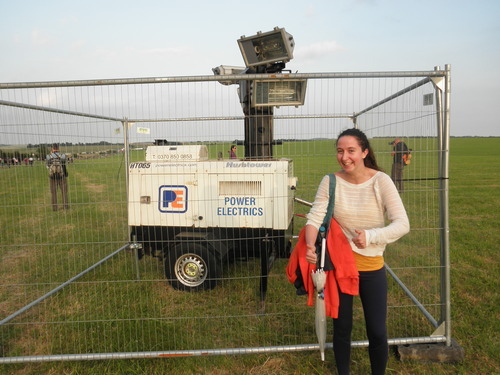
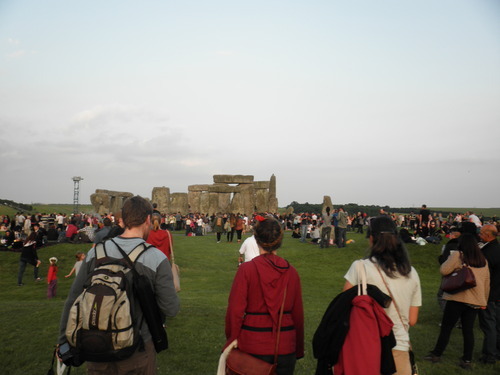
Reaching Stonehenge was both amazing and completely ordinary. It felt natural to be amongst the stones; it was only when you put everything into a sentence that it became spectacular and surreal. “I’m touching Stonehenge” “I’m walking in between the rocks of Stonehenge” “I’m getting my face painted in the shadow of Stonehenge” “I’m sipping chocolate liquer, eating twix, and walking around Stonehenge” “I’m praying with the druids at Stonehenge” “It’s really cold and 3am at Stonehenge” “I’m waiting with thousands of people for the sunrise at Stonehenge” “My hair is caught in Stonehenge.” Stonehenge made the ordinary, extraordinary.
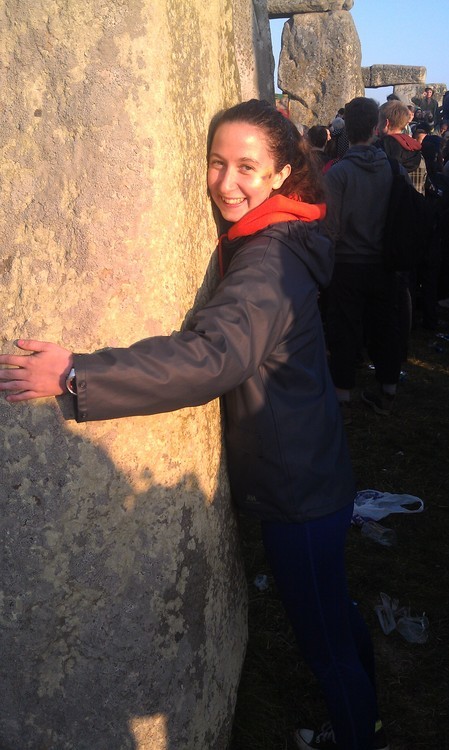
Somehow Lydia and Nadia started talking to this Welsh girl who introduced us to her Hungarian boyfriend who introduced us to a French dude, a German dude, and lots of Spanish-speaking people that mostly kept to themselves. And thus we had our base camp of food, tarp, face-painting, plenty of people coming and going, and several eyes keeping a watch on your stuff. One of the guys was an electrical engineer so we geeked out for a second. I struggled to interpret everyone’s amazing English through thick accents as we went through every introductory topic of nomadic young people: stories of where you have been and plans for where you’re headed.
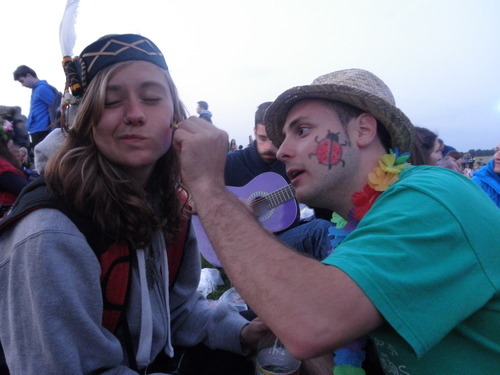
The druids floated around the entire venue, greeting one another like family at a reunion and silently watching over the rest of us. But they weren’t enforcers – that duty was definitely left to the understaffed security guards who struggled to push through crowds of people to control little fires of unrest. When a drunken attention-getter climbed to the top of one of the pillars, the druids I saw mostly took pictures and laughed while the security guards surrounded the stone perplexed as to how they might get him down. For such a large group of people, the event was largely peaceful – most offenses were from fireworks, alcohol, drugs, or strained nerves from lack of sleep – but those individuals who had taken the merriment too far were the exception, not the rule – it was a peaceful, ancient holiday and we were all here to enjoy it and each other. The most surprising thing to me were the druids themselves – that they still existed and practiced and wore these fantastic robes and costumes. The older men had silver beards and toothy smiles that made you believe Gandalf could be real. Their religion tied them to the land and in turn you could identify them as environmental activists, trying to keep the church they worship in free from pollution. At the sunset prayer as we cast “ohmmmmmms” in each of the cardinal directions, we were instructed to pray for (1) Peace in the Middle East, (2) the end of hunger and starvation in the world, and (3) the end of fracking. Of all the three things in the world to pray for, these druids had decided that stopping fracking had to be one of them. Throughout the long night, many of them held a rally at the edge of the field surrounding Stonehenge, taking turns standing in the center of the circle and delivering impassioned speeches, original poetry, acoustic songs, tales of horrible things already happening in the US, and commentary on British politics and corporations. This group was mostly lead by women. I understand how Environmentalism and Feminism (let alone Druid(ism?)) may cast your perception of how these middle-aged women must have appeared – but they were regal in their cloaks (and, yes, they shaved their legs and wore bras and had beautiful long flowing hair). The activist speeches were confined to those who wanted to listen and didn’t supersede the festival; the only hint you could find amongst the center of the mass of people was a US Native American tribal flag (couldn’t tell which tribe) that held some sort of symbolism for the druids and their anti-fracking movement that I never fully grasped.
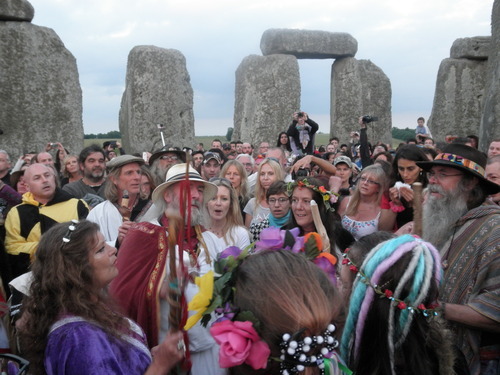
The dead of night was probably the hardest to get through. I went into the festival thinking the shortest night of the year at such a high latitude would be a piece of cake, but the cold set in during the long wait for the sunrise. You weren’t technically supposed to fall asleep on the ground in and around Stonehenge, but we all did. The four of us formed a cuddle puddle using Nadia’s jacket as a makeshift blanket that never quite covered everyone. The drum circles continued unceasingly throughout the night; new ones persistently cropped up whenever old ones began to die. The stadium lights stayed on throughout the night for safety purposes, but sleeping the wrong direction meant getting blinded and we struggled to find any stars in the otherwise clear night sky. We really lucked out in terms of weather. People walked around in rain boots with heavy duty coats and umbrellas in preparation, having clearly dealt with horrible weather in years past. But it didn’t rain a drop. When the sun came up, the atmosphere immediately warmed to a pleasant 70 degrees. And the sky stayed clear for the perfect view of the sunrise.
And oh, that sunrise. It teased us for hours. At 3am small streaks of light began to escape into the night. I got in position at 4am, leaving the group to be absorbed in the moment by myself. I leaned against one of the pillars of Stonehenge, looking out at the furthest stone that was supposed to mark where the sun would rise. I was certain the sun would appear at any moment. It was 5:30, when the sky was filled with light and it felt as if it was already the middle of the afternoon, when we finally saw the outline of that orange ball of light. I never actually saw anything aligned. (Actually, I almost didn’t even see the sunrise until the really nice guy next to me let me stand on his knee while a nearby schoolteacher let me support myself on his shoulder.) Which is funny because that was sort of the point of all this, right? To see the sunrise and the stones align? But in the end it sort of wasn’t, and that was ok. Nadia and I miraculously found each other, and she pulled me up onto one of the center rocks you could sort of stand on to get a view over the crowd. We were both so happy in that moment.
I’m honestly not sure I’ll go back to Stonehenge after that. How could you top it?
